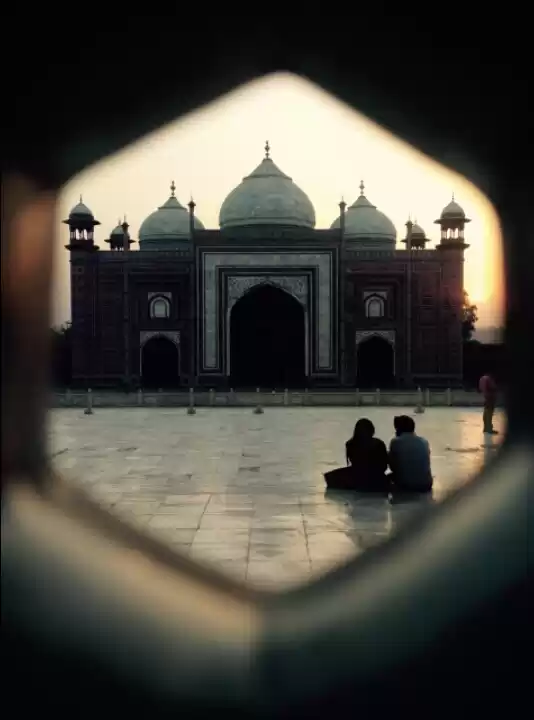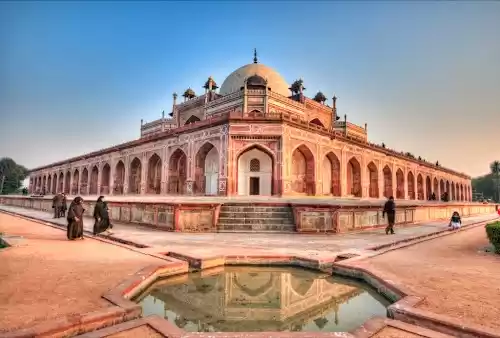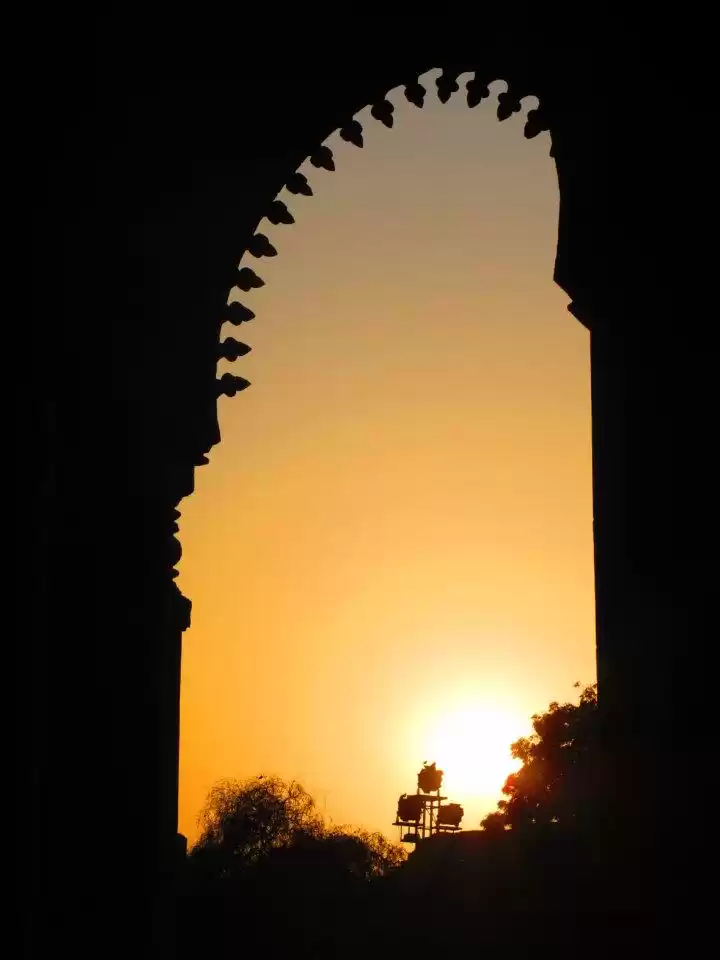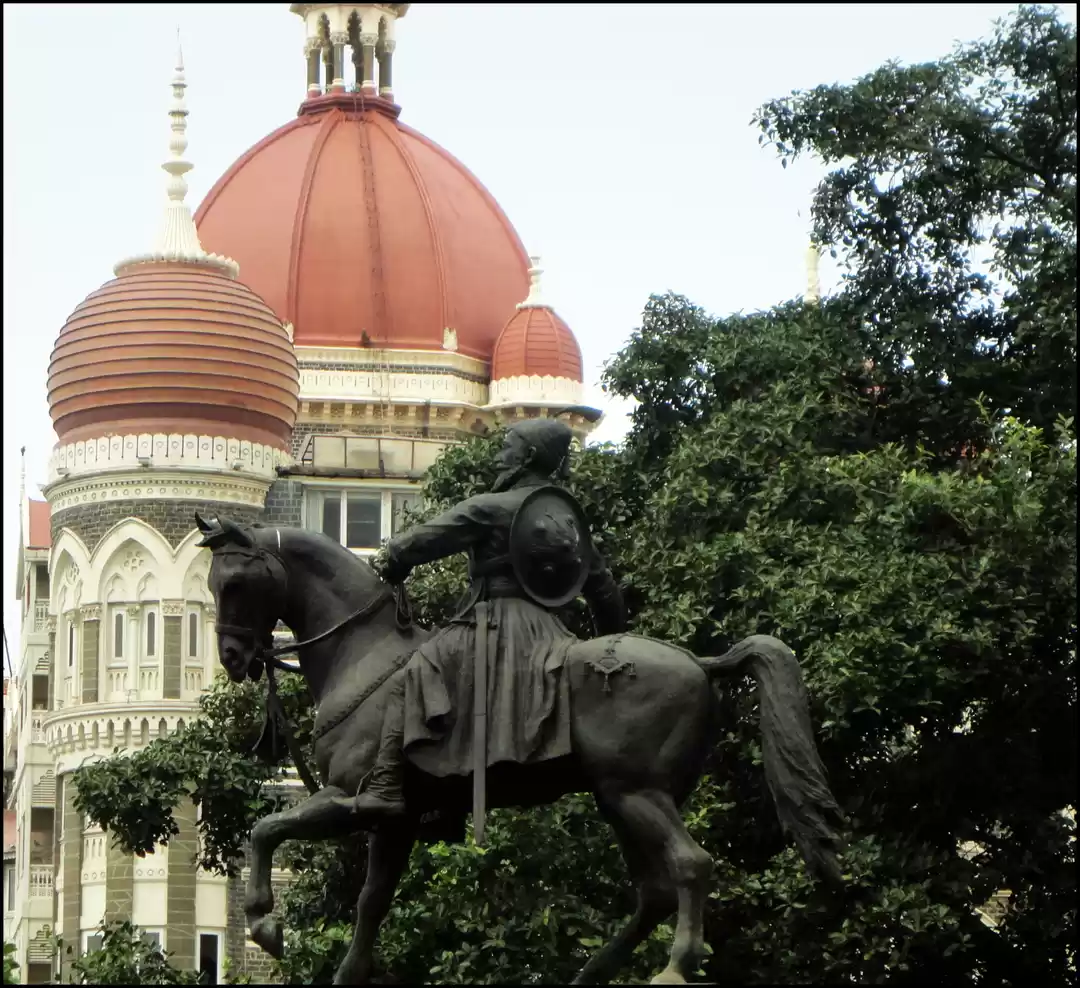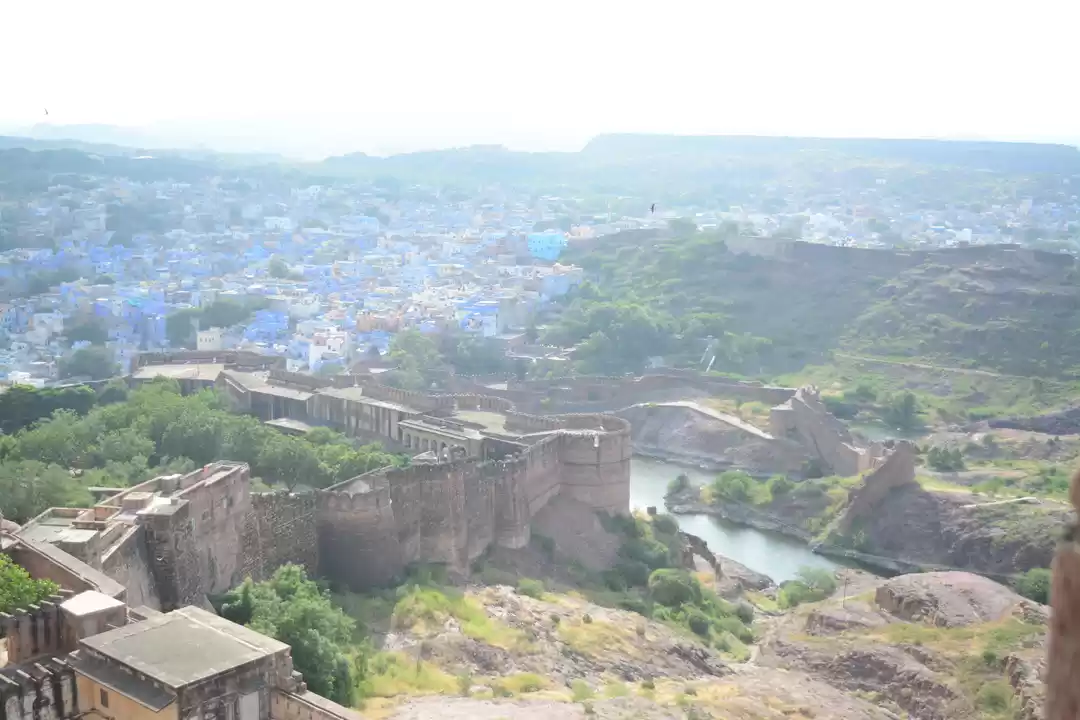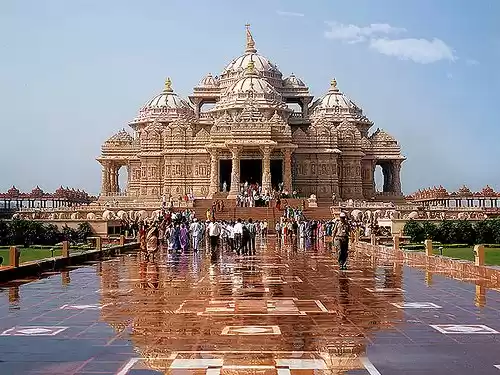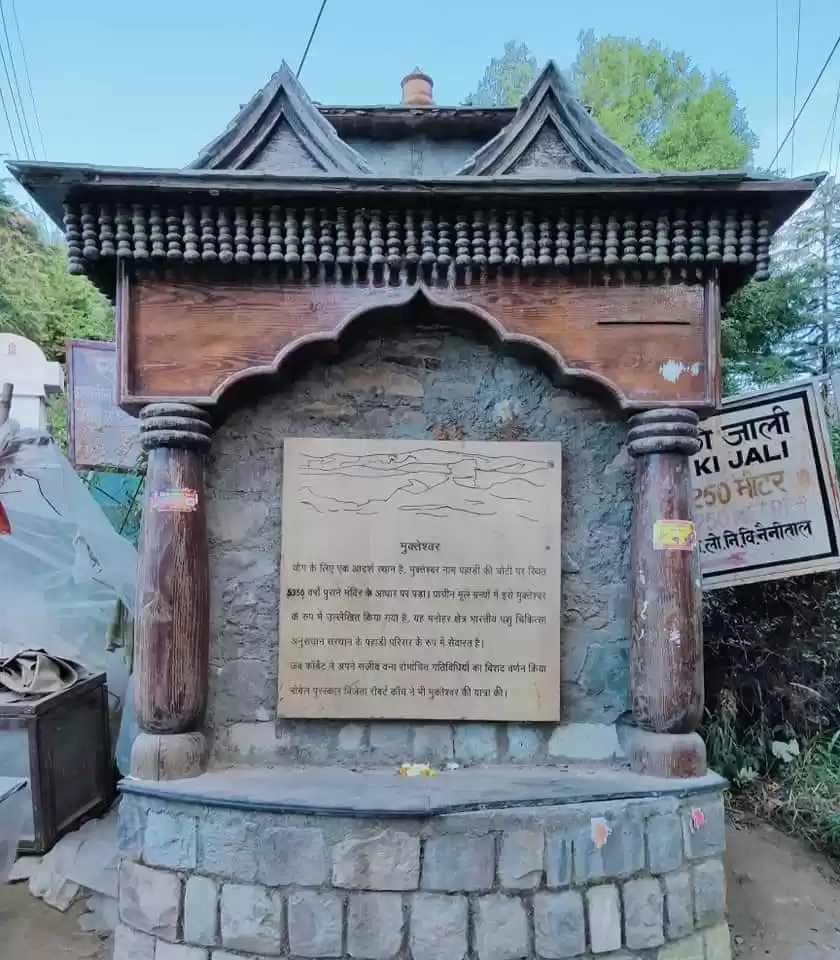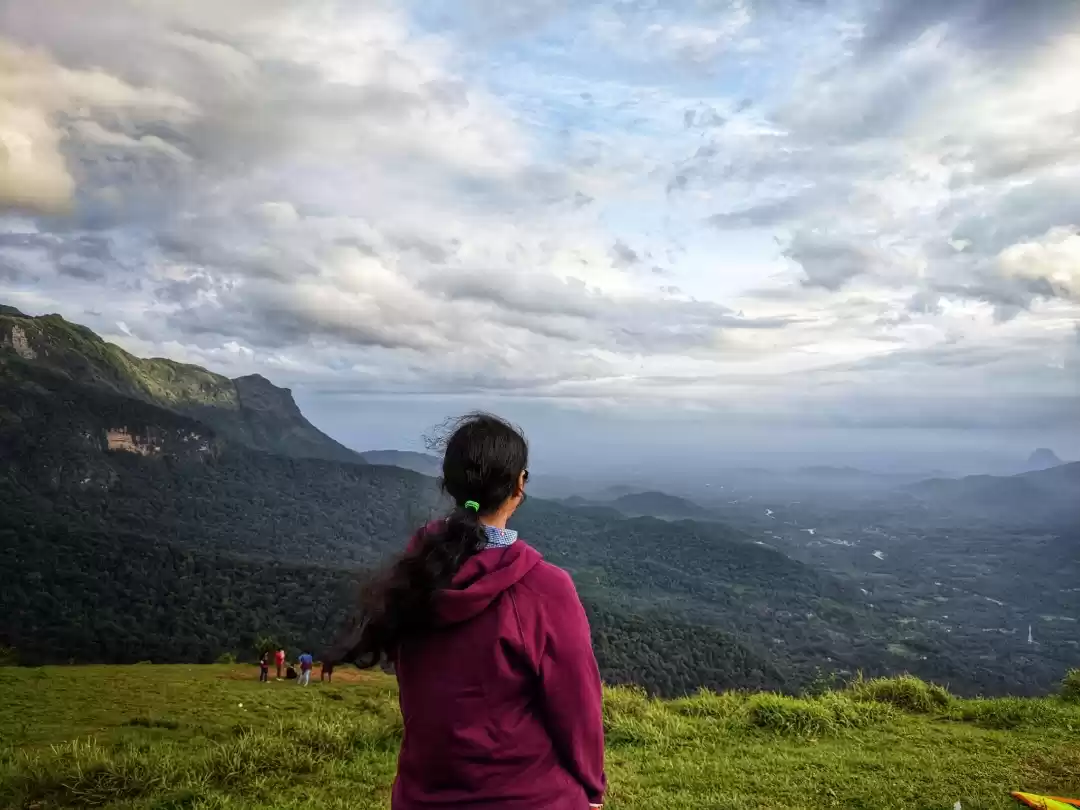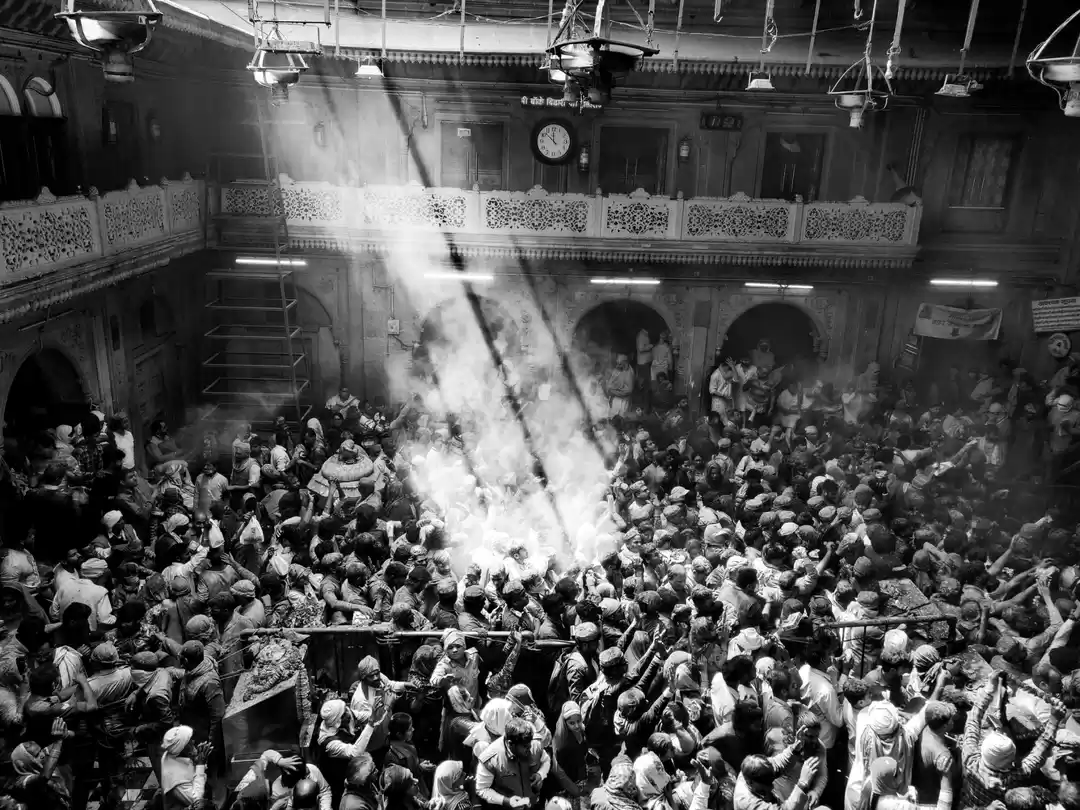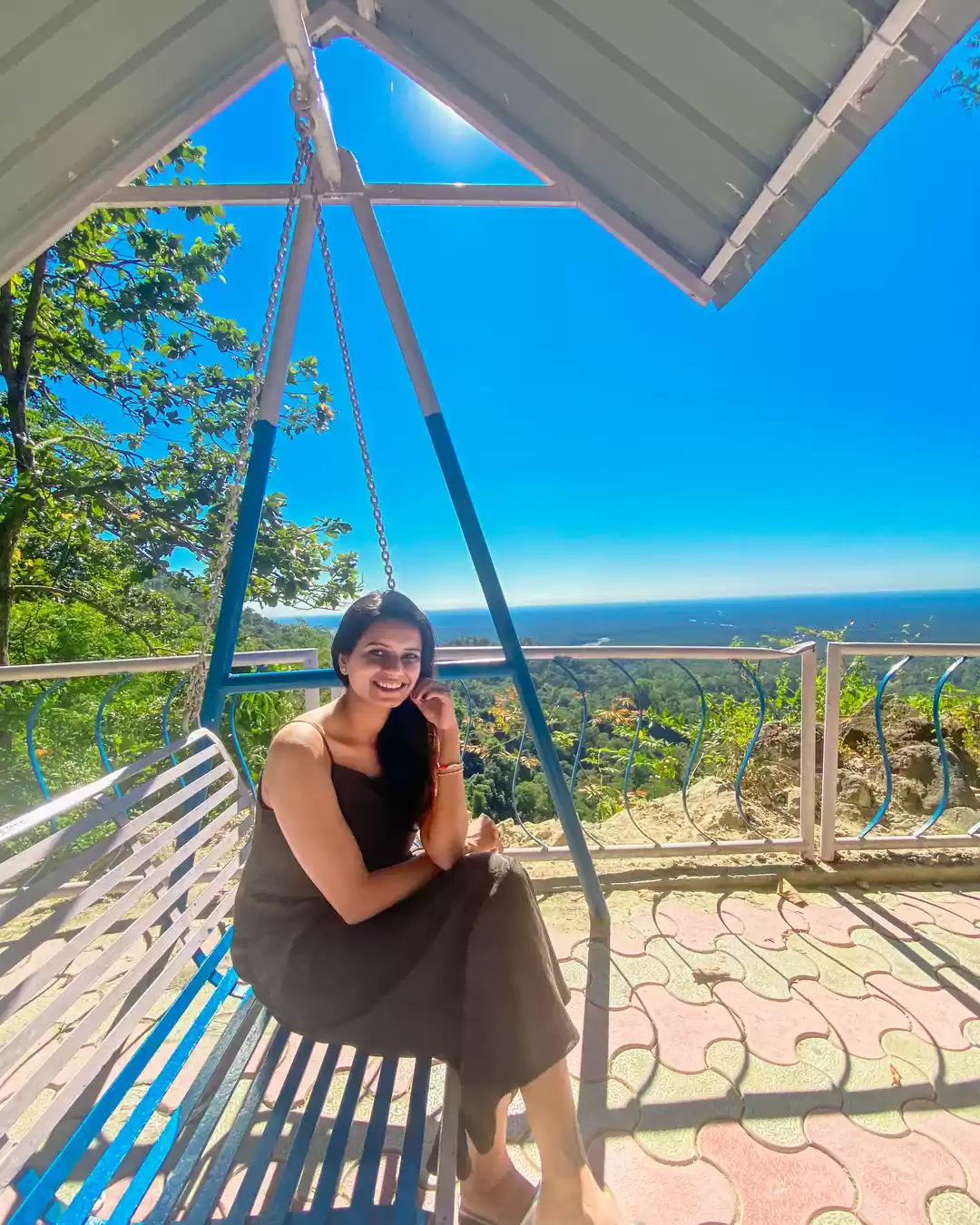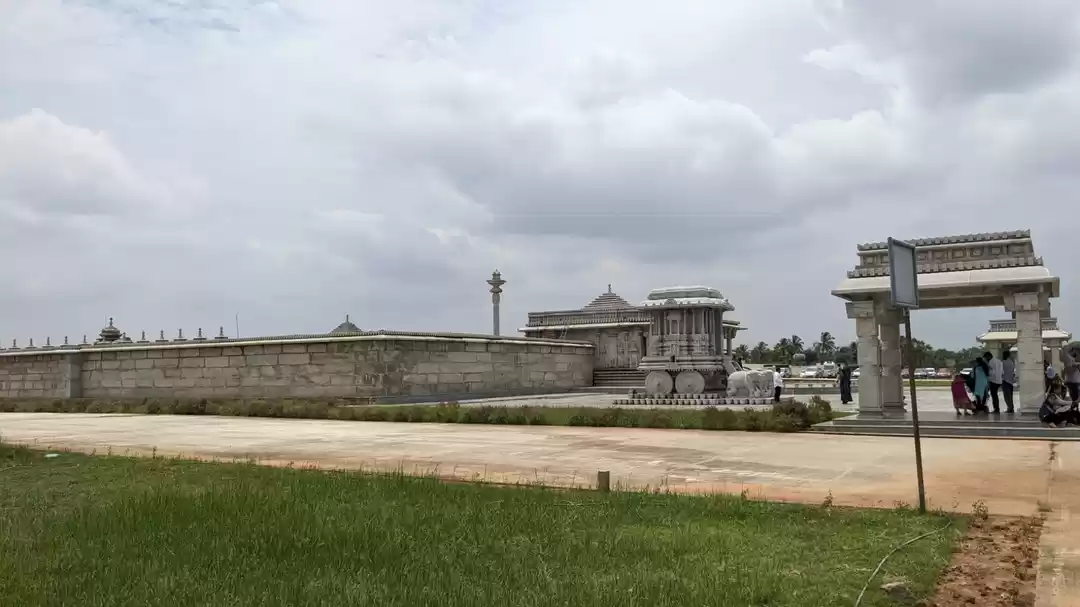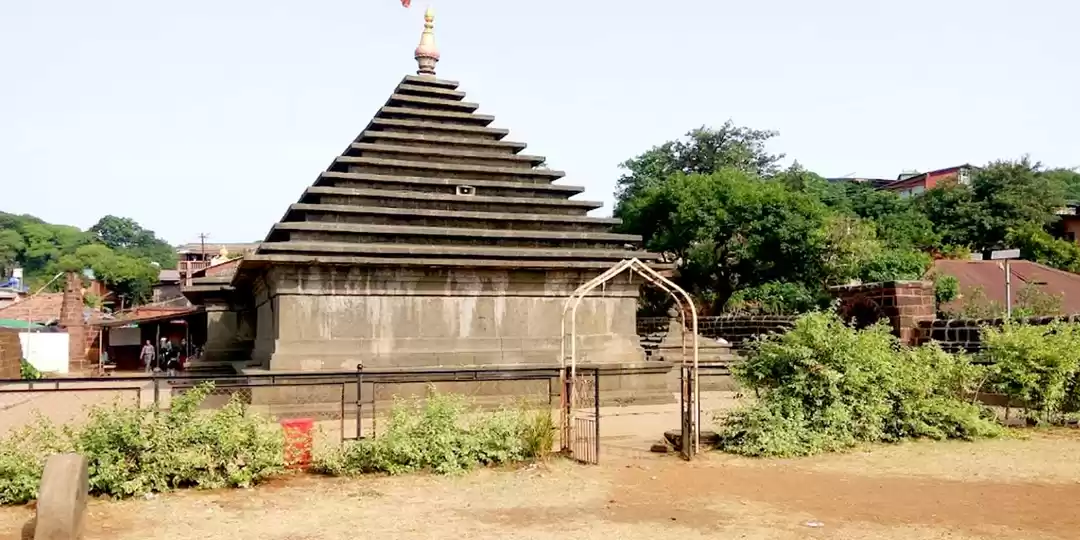Have you ever wondered what it would be like to witness the divine manifestation of Lord Shiva as a column of fire? Or to walk around a sacred mountain that represents one of the five elements of the universe? Or to experience the grace and wisdom of some of the greatest saints and sages of India?
If you answered yes to any of these questions, then you should definitely visit the Annamalaiyar temple in Thiruvannamalai, Tamil Nadu. This temple is one of the most revered and ancient temples in India, dedicated to Lord Shiva in his aspect of Arunachaleshwara or the Lord of the Red Mountain.
The temple complex covers an area of 25 acres and has four towering gateways, nine sacred tanks, numerous shrines, halls, and mandapas. The main shrine houses a huge lingam, which is believed to be the self-manifested form of Lord Shiva. The temple is also famous for its exquisite sculptures, paintings, and inscriptions that depict the rich cultural and religious heritage of the region.
The temple is not only a place of worship, but also a place of spiritual enlightenment. It is surrounded by the Annamalai hills, which are considered to be the embodiment of Lord Shiva as fire, one of the five elements of the universe. The hills are also the abode of many saints and sages, such as Ramana Maharshi, Virupaksha, Seshadri Swamigal, and others, who attained self-realization and liberation here.
The temple attracts millions of devotees and tourists every year, especially during the Karthigai Deepam festival, when a huge lamp is lit on the top of the hill, symbolizing the divine light of Lord Shiva. The temple also celebrates many other festivals, such as Brahmotsavam, Thiruvoodal, Shivaratri, and others, with great pomp and fervor.
In this article, we will provide you with a comprehensive guide to the Annamalaiyar temple, covering its history, myths, festivals, timings, online booking, and more. We will also give you some tips and suggestions on how to make the most of your visit, and some of the top attractions near the temple that you can explore. Whether you are a devout pilgrim, a curious traveler, or a spiritual seeker, you will find something to suit your interest and taste in this temple.
So, without further ado, let us begin our journey to the sacred abode of Lord Shiva.
History and Origin of the Annamalaiyar Temple
The history and origin of the Annamalaiyar temple are shrouded in mystery and legend. According to some sources, the temple was built by the Pallava kings in the 7th century CE, and later expanded and renovated by the Chola, Vijayanagara, and Nayaka dynasties.
The temple has witnessed the patronage and devotion of many kings, saints, and poets, who have contributed to its glory and fame. Some of the notable names associated with the temple are:
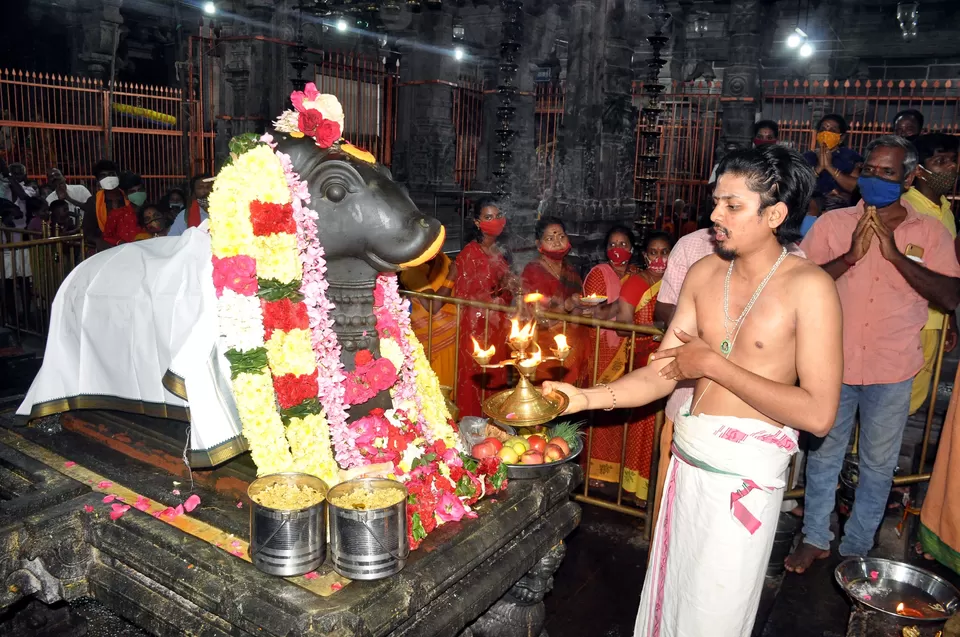
Rajaraja Chola I: He was one of the greatest rulers of the Chola dynasty, who built the famous Brihadeeswarar temple in Thanjavur. He also donated gold, jewels, and lands to the Annamalaiyar temple, and installed a massive Nandi statue in front of the main shrine.
Krishnadevaraya: He was one of the most illustrious rulers of the Vijayanagara empire, who patronized art, literature, and culture. He also visited the Annamalaiyar temple and offered valuable gifts and grants to the temple.
Appar: He was one of the 63 Nayanars, or the Shaivite saints of Tamil Nadu, who composed devotional hymns in praise of Lord Shiva. He visited the Annamalaiyar temple and sang many songs in honor of the deity. He also miraculously cured the king of a deadly disease by the grace of Lord Shiva.
Arunagirinathar: He was a 15th century poet and saint, who composed the famous Thiruppugazh, or the divine songs of praise, in Tamil. He visited the Annamalaiyar temple and sang many songs in praise of Lord Murugan, the son of Lord Shiva, who is also worshipped in the temple.
The temple has also been mentioned in many ancient scriptures, such as the Skanda Purana, the Arunachala Mahatmya, the Tevaram, and others. These scriptures describe the origin and significance of the temple and the hill, and the various myths and legends associated with them.
Annamalai Hills: The Sacred Mountain of Fire
The Annamalai hills, or the Arunachala hills, are the most prominent feature of the temple and the town of Thiruvannamalai. The hills are considered to be the embodiment of Lord Shiva as fire, one of the five elements of the universe. The name Arunachala means the red or the fiery mountain, and it is believed that Lord Shiva manifested himself as a column of fire on this hill, to settle a dispute between Lord Brahma and Lord Vishnu.
According to the legend, Lord Brahma and Lord Vishnu once argued about who was the supreme among them. To test them, Lord Shiva appeared as a huge column of fire, and challenged them to find its beginning and end. Lord Brahma took the form of a swan and flew upwards, while Lord Vishnu took the form of a boar and dug downwards. However, neither of them could find the end of the fire, and they realized their folly and surrendered to Lord Shiva.
Lord Shiva then blessed them and declared that he would reside on the hill as a lingam, and that anyone who worships him there would attain liberation. He also declared that the hill itself would be considered as his form, and that anyone who sees it, thinks of it, or circumambulates it, would also attain his grace.
The circumambulation of the hill, or the Girivalam, is one of the most popular and sacred rituals performed by the devotees of Lord Shiva. The hill has a circumference of about 14 km, and has eight lingams, representing the eight directions, along its path. The devotees walk around the hill, chanting the name of Lord Shiva, and offering prayers and offerings to the lingams. The Girivalam is especially auspicious during the full moon day, when thousands of pilgrims flock to the hill.

Another important ritual associated with the hill is the Karthigai Deepam, or the festival of lights, which is celebrated in the month of Karthigai (November-December). On this day, a huge lamp is lit on the top of the hill, symbolizing the divine light of Lord Shiva. The lamp is visible from several kilometers away, and it is believed that seeing it will remove all the sins and ignorance of the devotees. The lamp is lit after a grand procession of the deities from the temple, and it is followed by a spectacular display of fireworks. The hill is also the abode of many saints and sages, who have attained self-realization and liberation here. Some of the most famous ones are:
Ramana Maharshi: He was one of the most influential and revered spiritual masters of the 20th century, who taught the path of self-inquiry and self-knowledge. He came to the hill at the age of 16, after a profound experience of death and awakening. He lived in various caves and ashrams on the hill, and attracted many disciples and seekers from all over the world. He regarded the hill as his guru, and said that it was the manifestation of the supreme self.
Virupaksha: He was a 14th century saint and sage, who lived in a cave on the eastern slope of the hill. He was named after the cave, which was believed to be the abode of a saint named Virupaksha, who lived in the 8th century. He attained the state of videhamukti, or liberation without the body, and his body turned into ashes. His ashes are still preserved in the cave, and are worshipped by the devotees.
Seshadri Swamigal: He was a 19th century saint and sage, who was known for his miraculous powers and compassion. He came to the hill at the age of 19, and lived in various places, such as the temple, the garden, the cremation ground, etc. He was often seen in the company of Ramana Maharshi, and he protected and supported him in his early years. He was fond of children and animals, and he often distributed fruits and sweets to them.
Myths and Legends of the Annamalaiyar Temple
The Annamalaiyar temple is rich in myths and legends, that illustrate the glory and grace of Lord Shiva and his consort, Goddess Parvati. Some of the most popular and fascinating ones are:
The Curse of Parvati:
According to this legend, Goddess Parvati once playfully closed the eyes of Lord Shiva, while he was in meditation. This caused a great darkness in the universe, and the gods and sages were terrified. Lord Shiva opened his third eye and restored the light, but he was angry with Parvati for her act. He cursed her to be born as a mortal on earth, and to suffer the pains of human life.
Parvati was born as a princess named Akalika, in the kingdom of Thiruvannamalai. She grew up to be a beautiful and virtuous woman, but she was unaware of her divine origin. She was married to a king named Malikarjuna, who was a devotee of Lord Shiva. One day, she accompanied her husband to the Annamalaiyar temple, and saw the lingam in the main shrine. She was instantly drawn to it, and felt a strange connection with it. She prayed to the lingam, and asked for a boon to be reunited with her lord.
Lord Shiva was pleased with her devotion, and he appeared before her in his true form. He reminded her of her past life, and lifted the curse from her. He also blessed her husband, and granted him liberation. He then took Parvati with him to his abode on the hill, and they lived happily ever after.
The Grace of Ramana Maharshi:
According to this legend, there was a young boy named Venkataraman, who lived in Tiruchuli, a town near Madurai. He was a normal and playful boy, until one day, he had a profound experience of death and awakening. He felt that his body was dying, and he was detached from it. He realized that he was not the body, but the self, which was eternal and blissful. He lost interest in worldly affairs, and decided to renounce his family and home.
He boarded a train to Tiruvannamalai, without telling anyone. He reached the Annamalaiyar temple, and felt a strong attraction to it. He entered the temple, and went straight to the main shrine. He saw the lingam, and felt a surge of joy and peace. He prostrated before the lingam, and surrendered himself to Lord Shiva. He then shaved his head, and wore a loincloth, as a sign of renunciation. He took the name of Ramana Maharshi, and stayed in the temple for several months.
He was oblivious to the external world, and remained in a state of deep meditation. He did not care for food, water, or shelter. He was often harassed by the temple priests, who thought he was a madman. He was also bitten by insects and rodents, and his body was covered with wounds and infections. However, he did not feel any pain or suffering, and he was always immersed in the self.
He was noticed by some devotees, who recognized his spiritual greatness, and tried to protect and serve him. They moved him to various caves and ashrams on the hill, and provided him with food and medicine. They also asked him questions about his teachings and experiences, and he answered them with simple and profound words. He taught them the path of self-inquiry and self-knowledge, and guided them to the realization of the self.
He attracted many disciples and seekers from all over the world, who came to him for his grace and wisdom. He regarded the hill as his guru, and said that it was the manifestation of the supreme self. He said that anyone who comes to the hill, either physically or mentally, will be drawn by its power, and will eventually attain liberation. He lived on the hill for 54 years, until he left his body in 1950. He is still revered and remembered as one of the greatest sages of India, and his ashram and samadhi are visited by thousands of pilgrims every year.
The Miracle of Appar:
According to this legend, there was a king named Mahendravarman, who ruled over the Pallava kingdom in the 7th century CE. He was a follower of Jainism, and he persecuted the Shaivites, or the devotees of Lord Shiva. He destroyed many temples and shrines, and tortured and killed many saints and sages. He also suffered from a severe skin disease, which caused him immense pain and agony.
One of the saints who was persecuted by him was Appar, one of the 63 Nayanars, or the Shaivite saints of Tamil Nadu. He was a staunch devotee of Lord Shiva, and he composed many devotional hymns in praise of him. He visited many temples and holy places, and sang his songs in honor of the deity. He also performed many miracles, such as reviving a dead cow, curing a leper, and crossing a river on a crocodile.
He came to the Annamalaiyar temple, and saw the destruction caused by the king. He was saddened and angered by the sight, and he prayed to Lord Shiva to protect his devotees and punish the king. He then sang a song, in which he cursed the king to suffer more from his disease, and to die without salvation.
The king heard about the song, and he was furious. He ordered his soldiers to capture Appar, and bring him to his palace. He then challenged Appar to cure his disease, or face death. Appar accepted the challenge, and said that he would cure the king, if he agreed to worship Lord Shiva. The king agreed, and Appar applied some sacred ash on his body. To the astonishment of everyone, the king was instantly cured of his disease, and he felt a new life and energy in him.
He realized his mistake, and he fell at the feet of Appar. He begged for his forgiveness, and expressed his desire to worship Lord Shiva. Appar forgave him, and took him to the Annamalaiyar temple. He taught him the rituals and ceremonies of Shaivism, and initiated him into the faith. The king became a devout follower of Lord Shiva, and he donated many gifts and grants to the temple. He also restored and renovated the temple, and made it more beautiful and grand. He also composed some hymns in praise of Lord Shiva, and became one of the 63 Nayanars. He was known as Mahendravarman Pallava Nayanar, and he attained the abode of Lord Shiva after his death.
How to Reach the Annamalaiyar Temple
The Annamalaiyar temple is located in the town of Thiruvannamalai, in the state of Tamil Nadu, India. The temple is easily accessible by various modes of transport, such as air, rail, and road. The nearest airport is the Chennai International Airport, which is around 150 km from Thiruvannamalai.
From there, one can take a taxi, bus, or train to reach the temple. The nearest railway station is the Thiruvannamalai Railway Station, which is located at a distance of 1.5 km from the temple. From there, one can take a bus or auto-rickshaw to the temple. There are also many public and private buses that connect Thiruvannamalai with other major cities and towns in Tamil Nadu and neighboring states.
Alternatively, one can also drive to the temple by following the National Highway 77 or the State Highway 9, which pass through Thiruvannamalai. The temple has ample parking space for vehicles, and there are also many hotels and lodges nearby for accommodation.

Best Time to Visit
the best time to visit the Annamalaiyar temple is between November and March. The temperature is pleasant to explore the area, and the temple celebrates many festivals, such as Karthigai Deepam, Brahmotsavam, and Thiruvoodal, during this period. You can also enjoy the Girivalam ritual, which is especially auspicious during the full moon day.
However, you should also be prepared for large crowds and long queues, as the temple attracts millions of devotees and tourists every year. If you want a more peaceful and serene experience, you can also visit the temple during the off-season, when the weather is still moderate and the temple is less crowded.
You can also visit the nearby attractions, such as Ramana Ashram, Virupaksha Cave, Tiruamalai, etc., at your own pace. Whatever time you choose to visit the temple, you will surely be blessed by the grace and glory of Lord Shiva.
The Annamalaiyar temple is a magnificent and majestic temple, that showcases the splendor and grace of Lord Shiva. It is a place of history, mythology, spirituality, and culture, that attracts millions of devotees and tourists every year. It is also a place of enlightenment, where many saints and sages have attained self-realization and liberation. Whether you are looking for a divine blessing, a spiritual awakening, or a memorable experience, you will find it at the Annamalaiyar temple.
We hope this guide has provided you with all the information and tips you need to plan your visit to the Annamalaiyar temple. If you have any questions or feedback, please let us know. We would love to hear from you.
Thank you for reading this article, and we wish you a happy and safe journey to the sacred abode of Lord Shiva.


